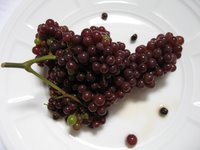
On a recent business trip to San Francisco, I picked up 2 lbs. of California's sweet Meyer lemons at the Ferry Plaza farmers market, so I could preserve them in Mason jars as Christmas presents. Preserved lemons are commonplace throughout the Middle East, and are especially integral to the cuisines of North Africa, where they perfume tagines and add a piquant zing to meze.
When I first started making these years ago, I loved the look of them on my shelves, but only used them once or twice a year. With more daring experimentation, I've come to rely on preserved lemons in my Bloody Marys, a quinoa salad with pine nuts, feta, and mint, and in this no-brainer preserved lemon dip when guests drop by unexpectedly.
1. Use as many lemons as you like--Meyer lemons are preferable, as their skin is thin and somewhat sweet.
2. Cut each lemon 3/4 of the way, horizontally. Now make another cut, perpendicular to the first one, also only cutting 3/4 of the way through the lemon. The fruit should now open like a flower that's held together at the base.
3. Pack the lemons with kosher salt (be sure to fill both cuts), and layer snugly into a clean Mason jar.
4. Cover with freshly squeezed lemon juice and store in the refrigerator.
Preserved lemons will be ready after one month and can be stored for up to one year in the fridge.















